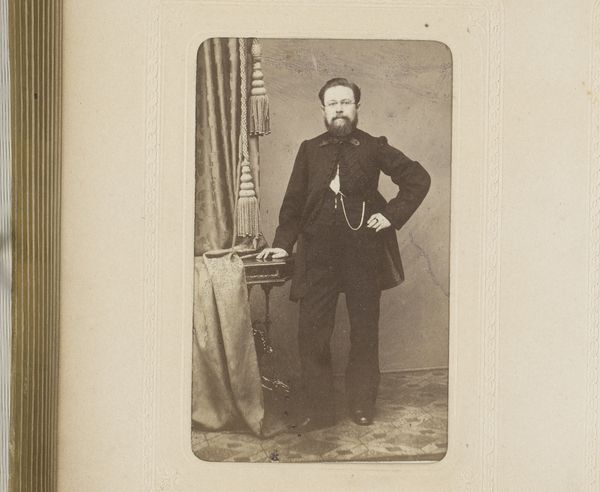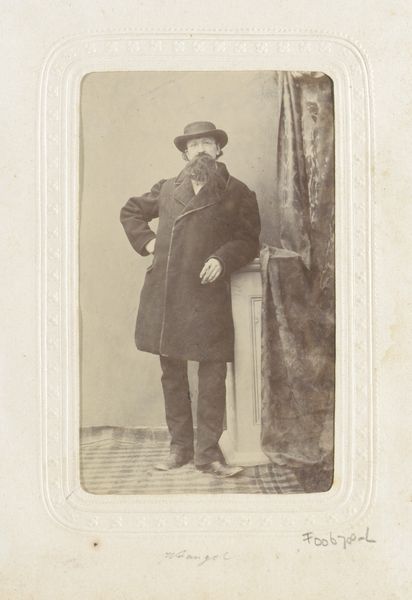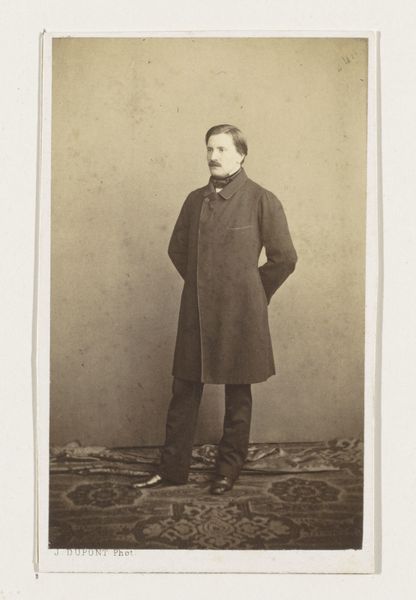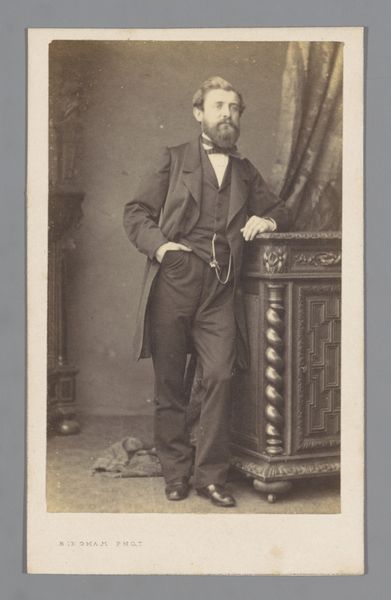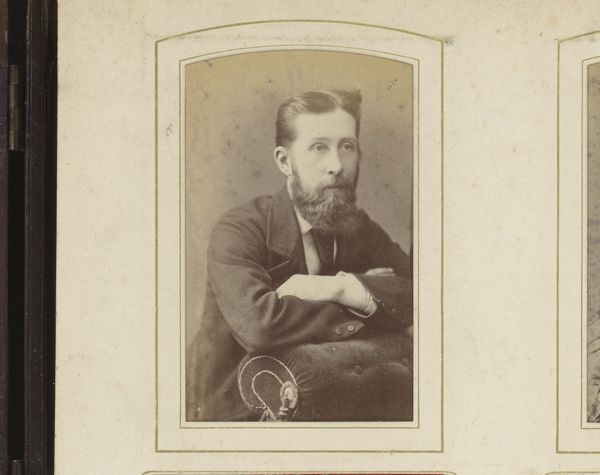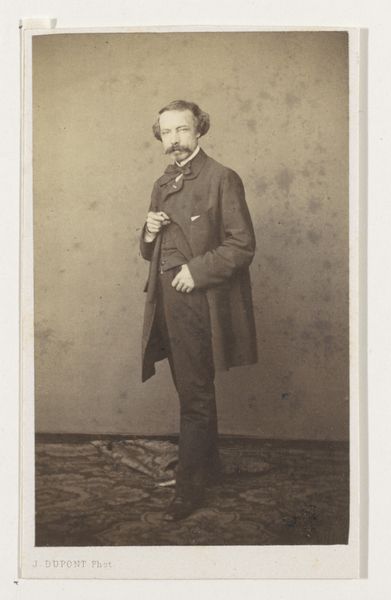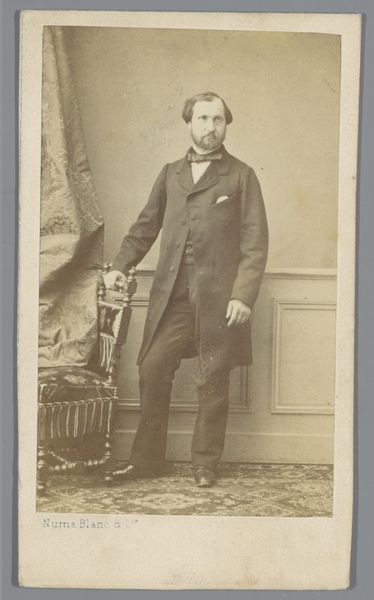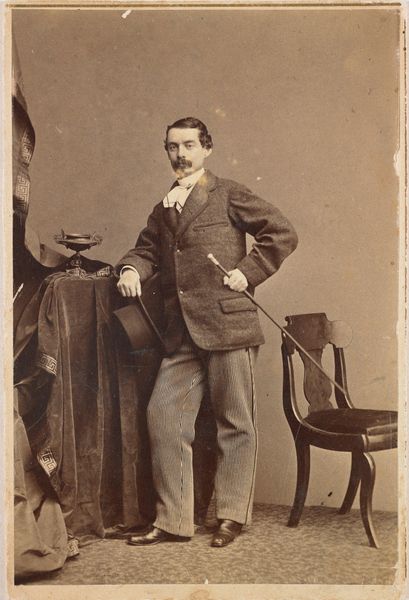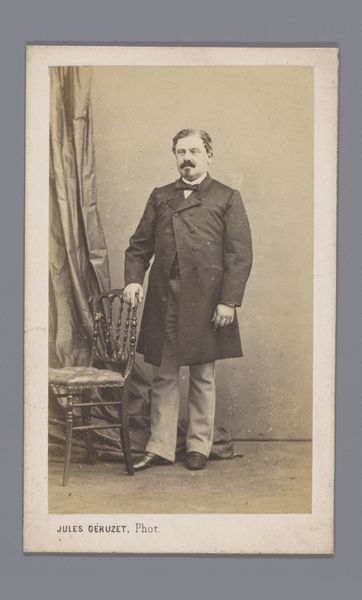
photography, gelatin-silver-print
#
portrait
#
archive photography
#
photography
#
historical photography
#
gelatin-silver-print
#
19th century
#
realism
Dimensions: height 87 mm, width 53 mm
Copyright: Rijks Museum: Open Domain
Editor: This is a gelatin-silver print simply titled "Portret van een staande man," created sometime between 1860 and 1880 by Baldi & Würthle. It feels like a pretty straightforward portrait at first glance. What can you tell me about it? Curator: On the surface, yes, a typical portrait of the period. But I find myself drawn to the power dynamics inherent in such images. Who commissioned this? Was this man part of the burgeoning middle class, asserting his presence? The very act of capturing this image, given the socio-political constraints of 19th-century society, speaks volumes about power and access. Notice the somewhat performative relaxation in his pose – it suggests an attempt to convey status. Editor: Performative relaxation, that's a good way to put it! It makes me think, was this pose considered modern at the time, breaking away from older, more rigid conventions? Curator: Precisely! And within those conventions lie complex issues. What does it mean to 'portray' someone? Who gets to decide the narrative? Consider the gaze of the subject, almost confrontational, as if challenging us across time. What is he challenging us *to* do? Editor: So, you're suggesting it's not just about documenting his existence, but it's a form of agency? Curator: Absolutely. Early photography was still relatively exclusive, linked to financial means. This man likely had the social standing and wherewithal to dictate, to some degree, his own image. And that act in itself challenged prevailing social structures by suggesting that a rising social group held influence. This makes it far more complicated and exciting than simply “a portrait.” Editor: That really reframes how I see it. I'll never look at old photographs the same way. Curator: Indeed, by critically engaging with historical images, we gain critical insight into contemporary representational modes, who we include and who we exclude, and on what terms.
Comments
No comments
Be the first to comment and join the conversation on the ultimate creative platform.
